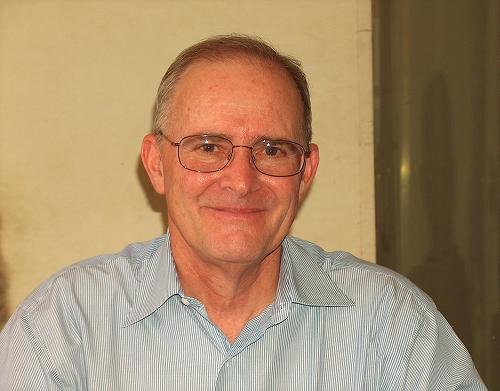So said Richard Lampman, HP's chief scientist, during a visit to Israel

Although HP invests most of its R&D budget in the development of new products, it does not neglect the longer-term research either. 5% of the budget designated for R&D is used for developments, which will bear fruit in another five years, and in many cases a long time after that - said Richard Lampman, director of HP laboratories worldwide, and the company's chief scientist. Lampman was yesterday the guest of the CEO of HP Israel, Gil Rosenfeld, and of Prof. Avraham Lampel, director of the HP Israel Laboratories.
According to Prof. Lampman, two areas that HP entered a long time ago, and which should come to light in the coming years, are nanotechnology and WiMAX. WiMAX is a technology that will allow you to connect at high speeds in a regional wireless network, and not just locally as in today's WiFi where antennas are required to be placed at very short distances from each other if you want to cover a large area. However, the main impact of this technology will be in areas where there is no good ground coverage of optical fibers, cables or telephone wires. (See extensive news about WiMAX in the Today's Conversations section).
As for nanotechnology, Lampman said that Moore's Law as it has been manifested in the last 40 years, according to which computers become more powerful and the price per processing unit decreases, is expected to encounter natural obstacles in about 10 years if the companies continue to rely on silicon technologies. On the other hand, nanocomputers are a completely different story according to Lampman, and they will be able to increase the computing power available for use by several billion times. "If today's computers are 100 times more powerful than the large computers that took up entire rooms 50 years ago, then this is a billion-fold increase, something that will enable applications that no one has thought of," Lampman pointed out, "in the field of nanotechnology, the boundary between biology and chemistry will blur more and more. The computers will be so small that it will not actually be possible to maintain them, and the solution will be the production of computers with the ability to self-heal, including surplus parts, like living things do. One of the substances in which we are examining the use of nanocomputers is chlorophyll, which is used by plants in the process of photosynthesis."
A new concept that will be born, according to Lampman, will be "dust computers". For example, computers with radio capability will be scattered in the paint powder used to paint the wall in the room. These computers will be connected to each other in a virtual network, with each such computer taking care of one of the functions - measuring the heat and, if necessary, turning on the air conditioner, directing the light intensity, as well as helping to clean the wall.
"Science fiction doesn't even begin to scratch the surface of the possibilities of nanotechnology, but in a few years its applications will be real and useful everywhere," Prof. Lampman concluded.
Introducing the distinguished guest, Rosenfeld noted that "HP's oldest activity in Israel is that of Prof. Lampel at the HP laboratories at the Technion in Haifa. In the HP logo the word INVENT appears and not for nothing. Today, the laboratories deal with products and technologies that will affect our lives in 10-20 years. A company that will wait forever for someone else to develop technologies, and will only implement them and integrate them - will not survive for long. In the Israeli market we have a presence as a leading IT company, but HP also sees Israel as an interesting ground for investments in R&D, and we have an amazing team at the Technion."
